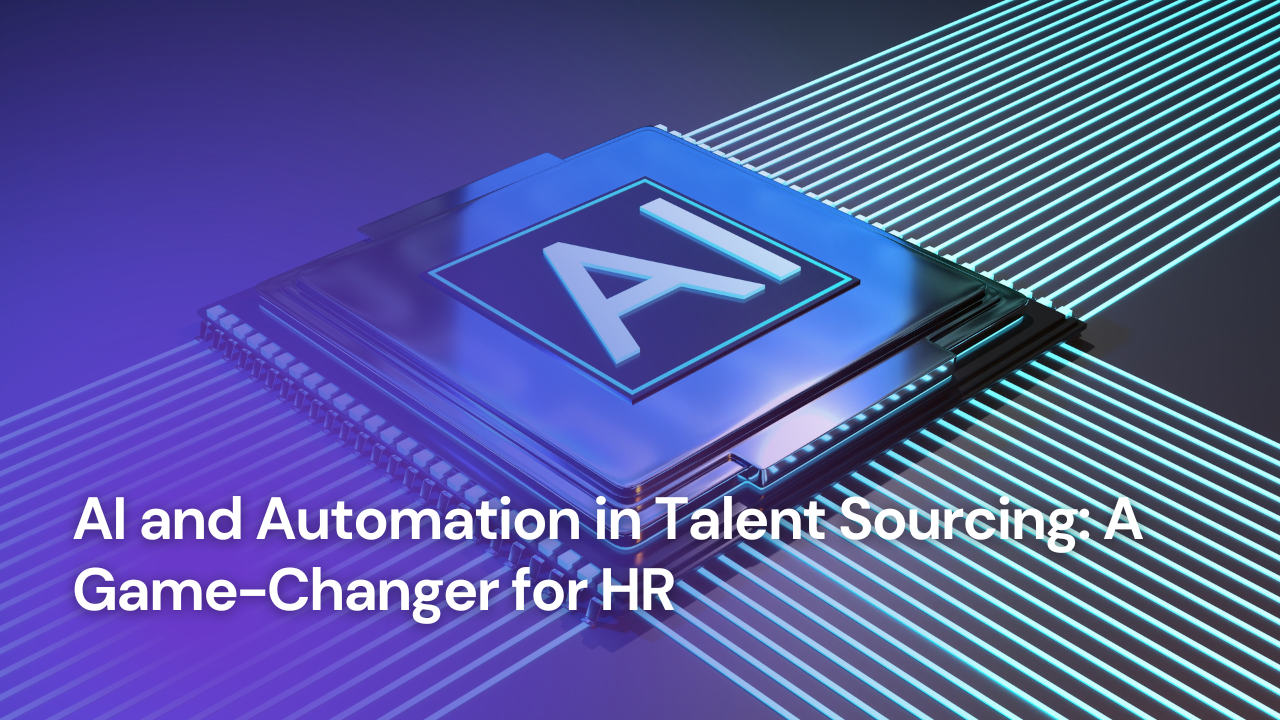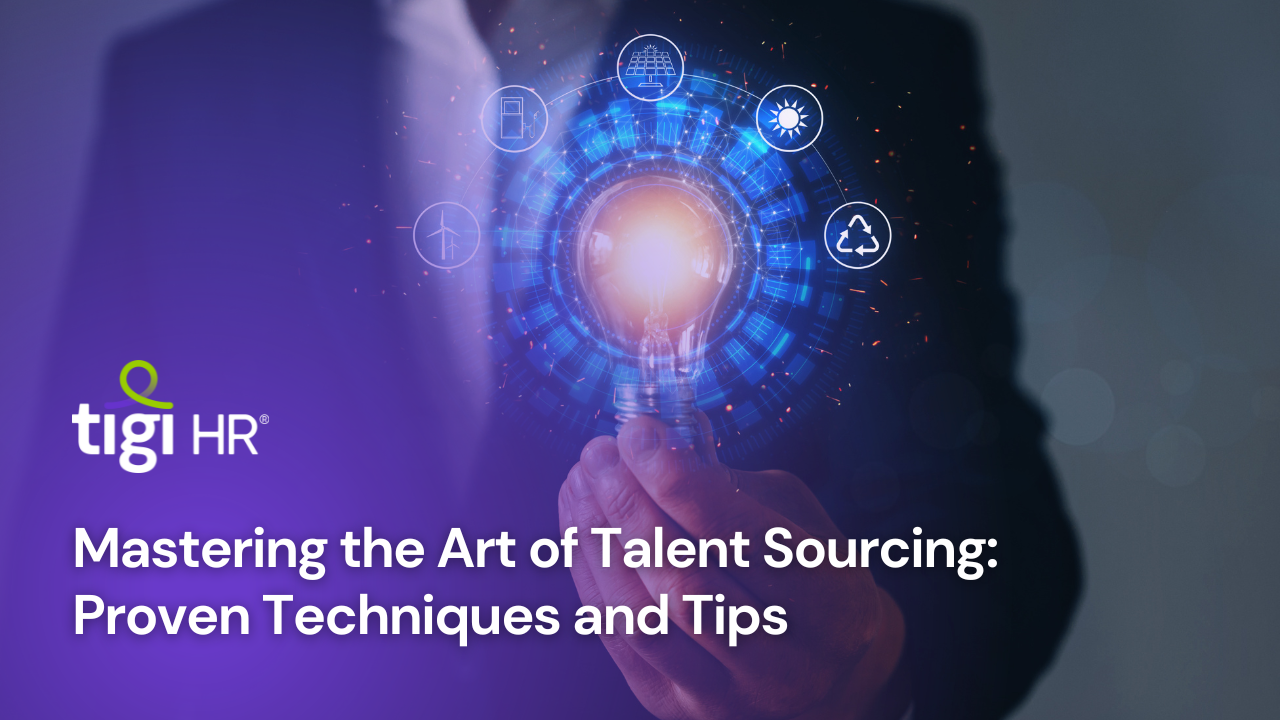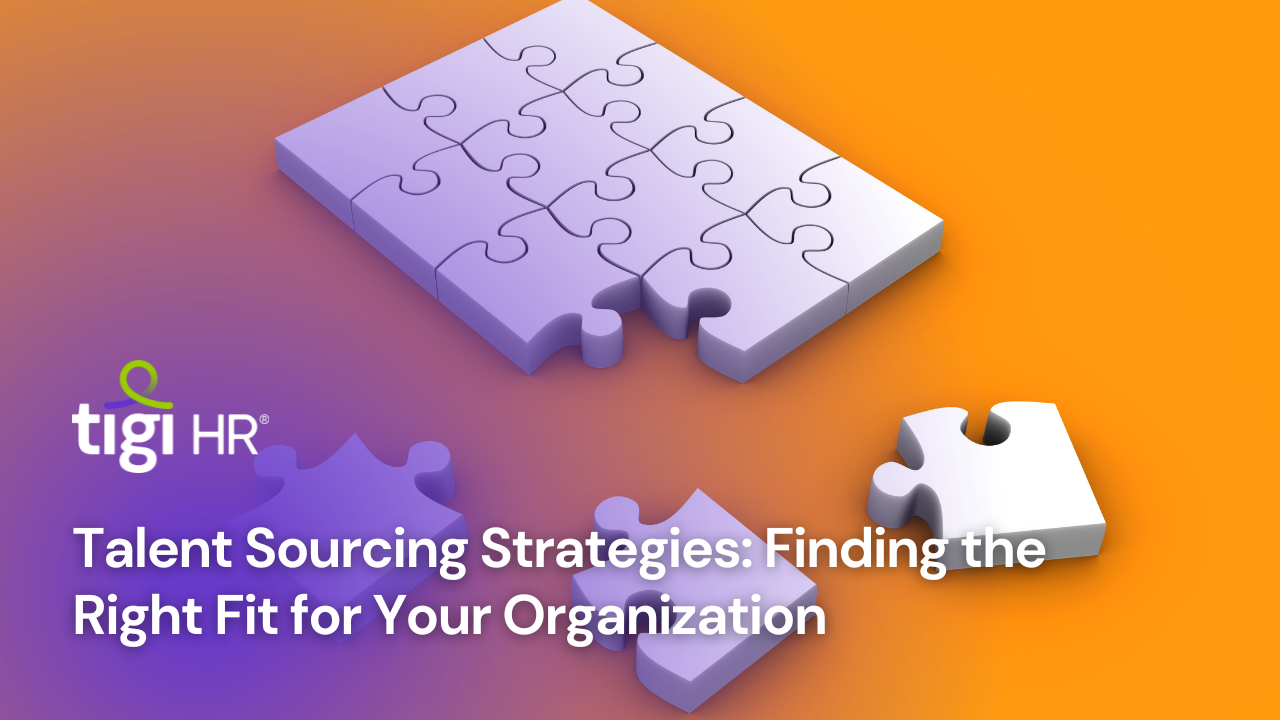“In an increasingly interconnected world, the landscape of talent acquisition has undergone a significant transformation, paving the way for the emergence of global talent sourcing. This strategic approach enables businesses to transcend geographical boundaries, accessing a diverse pool of skills and experiences from around the world. With the rise of remote work and technological advancements, companies are leveraging this trend to overcome skill shortages, foster innovation, and enhance competitiveness. However, while the benefits of global talent sourcing are abundant, challenges in cultural integration, legal complexities, and coordination across different time zones exist. By implementing effective strategies, such as leveraging technology, prioritizing cultural integration, partnering with global recruitment agencies, and establishing robust remote work policies, businesses can navigate these challenges. The future of global talent sourcing looks promising as the world continues to embrace remote work models and diversity in the workforce. Embracing this strategy equips organizations with the tools to harness the power of a globally dispersed workforce, ensuring sustained success in an ever-evolving business landscape.”
Category: INSPIRING HR LEADERS
Talent Sourcing Trends in 2023: What to Watch For
In the dynamic realm of talent acquisition, 2023 unveils a landscape marked by progressive shifts in sourcing strategies. Embracing these changes becomes imperative for organizations aiming to attract and retain top-tier talent in a highly competitive market. Let’s explore some of the key trends reshaping talent sourcing in this transformative year.
1. **AI and Automation – Redefining Efficiency**
The fusion of technology and talent sourcing is revolutionizing the initial stages of recruitment. Automated screening tools and AI-driven software are streamlining the process, allowing HR professionals to process a large volume of candidates efficiently. The integration of these technologies has been a game-changer, enabling recruiters to focus on higher-value tasks, such as engaging with potential candidates.
2. **Elevated Focus on Candidate Experience**
The candidate experience has emerged as a pivotal aspect influencing job seekers’ decisions. A seamless and personalized journey throughout the recruitment process has become a defining factor for applicants. Employers are increasingly investing in strategies to improve the candidate experience, recognizing its profound impact on attracting top talent and bolstering the company’s employer brand.
3. **Remote Work and Global Talent Pools**
The global shift toward remote work has broadened the horizons of talent sourcing. With a significant surge in remote work options, companies are tapping into global talent pools. Seeking expertise and diverse perspectives, organizations are reevaluating sourcing strategies to accommodate a broader geographical scope and culturally diverse talent.
4. **Niche Job Boards and Specialized Platforms**
Specialized job boards and industry-specific platforms are gaining traction. Job seekers are gravitating towards these niche platforms, especially when pursuing roles requiring specific skills or industry expertise. Organizations are aligning their sourcing strategies to include these specialized avenues to target and engage with niche talent effectively.
5. **Leveraging Employer Branding on Social Media**
The digital landscape has evolved as a primary platform for employer branding and talent sourcing. Companies are harnessing the power of social media to present an authentic and compelling employer brand. Statistics reveal that a substantial percentage of job seekers consider a company’s social media presence before applying, emphasizing the significance of a strong, consistent online brand presence.
In navigating the evolving terrain of talent sourcing, adaptability and innovation are the keys to success. Companies that embrace these trends and tailor their strategies to align with the changing dynamics of talent acquisition will undoubtedly have a competitive edge in attracting and retaining top talent in 2023.
Talent Sourcing Platforms: Choosing the Right Tools for Success
In the contemporary realm of recruitment, finding and securing top talent has become an arduous task. However, the emergence of talent sourcing platforms has fundamentally transformed the way companies approach hiring. These platforms, leveraging advanced technology and data analytics, offer a myriad of benefits, from expanding the candidate pool to streamlining the recruitment process. But in a market flooded with options, the critical question arises: How does one select the most suitable platform for their organization?
The answer lies in a strategic approach. Understanding the organizational needs, assessing technological capabilities, evaluating user experience, considering integration possibilities, and reviewing platform reputation are key elements in making an informed decision. From established names like LinkedIn Talent Solutions and Indeed to more specialized tools like Greenhouse and SmartRecruiters, each platform presents distinct features tailored to diverse recruitment needs.
As technology continues to evolve, the future of talent sourcing platforms holds promising developments. With AI-driven candidate matching and a heightened focus on remote work scenarios, these platforms are set to revolutionize the way businesses connect with talent worldwide. Choosing the right platform isn’t just about filling vacancies; it’s about creating a streamlined, efficient, and cost-effective recruitment strategy that fuels an organization’s success in a fiercely competitive market.
AI and Automation in Talent Sourcing: A Game-Changer for HR
In today’s rapidly evolving job market, the traditional approaches to talent sourcing within Human Resources have undergone a dramatic transformation. The integration of Artificial Intelligence (AI) and automation has emerged as a pivotal game-changer in reshaping HR practices, streamlining recruitment processes, and optimizing the identification, attraction, and retention of top talent.
The evolution of talent sourcing, once reliant on time-consuming manual efforts, has been redefined by AI-powered candidate screening and automated outreach strategies. These innovative tools significantly reduce the time taken to fill positions and contribute to a notable decrease in turnover rates, as demonstrated by industry reports and surveys.
Moreover, AI and automation aren’t just benefiting employers; they’re enhancing the experience for candidates as well. Automated communication tools and chatbots are improving engagement and providing a personalized touch, ultimately resulting in increased candidate satisfaction throughout the hiring process.
By harnessing predictive analytics, HR departments can now make data-driven decisions and forecast future hiring needs. Furthermore, the integration of AI has the potential to mitigate bias in the recruitment process, creating a fairer and more inclusive environment.
The future of AI and automation in HR appears promising, with advancements expected in candidate relationship management, skill development analysis, and even virtual reality simulations for candidate assessments. However, alongside these advancements, the challenges of data privacy, ethical AI use, and potential job displacement must be addressed as these technologies become more prevalent in HR.
AI and automation have undoubtedly revolutionized talent sourcing in HR, optimizing processes, enhancing candidate experiences, and enabling data-driven decision-making. The future lies in innovative applications of these technologies, reshaping the HR landscape and redefining the roles of HR professionals as strategic partners within their organizations. To stay ahead and attract top talent, embracing these technological advancements is crucial for creating a more efficient, unbiased, and engaging recruitment process.
Unlocking Hidden Talent: Innovative Sourcing Strategies You Need to Know
In today’s dynamic job market, traditional hiring methods often overlook exceptional individuals with diverse skill sets, unconventional backgrounds, and non-linear career paths. This phenomenon has fueled the need for innovative sourcing strategies that unlock the potential of hidden talent. Businesses striving for a competitive edge must embrace these transformative approaches to revolutionize their talent acquisition processes.
### The Quest for Hidden Talent
The landscape of talent acquisition is evolving, demanding a departure from conventional recruitment norms. Research emphasizes the remarkable contributions of individuals with diverse backgrounds, underscoring the critical role these “hidden gems” play in organizational success. Statistics from LinkedIn reveal that 82% of talent professionals acknowledge the pivotal role of diverse skill sets in driving company accomplishments.
### Embracing Technology: Data and AI
The integration of data-driven tools empowered by artificial intelligence (AI) has become instrumental in modern recruitment. These sophisticated tools analyze extensive datasets to unearth potential candidates, leveraging AI’s capability to assess skills, behaviors, and predict candidate success. Notably, Deloitte’s survey highlights that 69% of organizations are leveraging AI in their talent acquisition strategies, reshaping how talent is identified and engaged.
### Diversity and Inclusion as Competitive Advantages
The strategic advantage of embracing diversity and fostering inclusion goes beyond moral imperatives. Studies consistently underscore the outperformance of companies with diverse teams. By nurturing inclusive environments, businesses not only attract diverse talent but also cultivate an atmosphere where unique perspectives thrive, essential for innovation and growth.
### The Power of Employer Branding
A robust employer brand acts as a magnet for top talent. It significantly influences potential candidates, with 75% of job seekers considering an employer’s brand before applying for a job. An organization’s online reputation and positive employee experiences play a pivotal role in attracting and retaining talent.
### Unveiling Talent in Niche Communities
Exploring niche communities and industry-specific platforms reveals exceptional talent that might bypass traditional recruitment channels. Engaging with specialized groups, forums, and events related to specific skills or industries opens doors to individuals who possess unique and specialized skill sets.
### Rethinking Hiring Criteria: Skills Over Degrees
A paradigm shift from stringent education and experience requirements to skills-based assessments widens the scope of qualified candidates. Companies are increasingly valuing skills over specific degrees, recognizing talent nurtured through alternative avenues like online courses and self-directed learning.
### The Path Forward: Holistic Talent Acquisition
By amalgamating these innovative strategies, companies can create an ecosystem where unique talents are acknowledged, valued, and integrated into their workforce. The holistic approach, comprising data-driven tools, inclusive cultures, compelling employer branding, exploration of niche communities, and skills-based hiring, fosters an environment where diverse talents thrive.
### Embracing Innovation for Success
Innovation in talent acquisition is key to unlocking the untapped potential of individuals who might otherwise remain unseen. Businesses that effectively incorporate these transformative strategies not only broaden their talent pool but also gain a competitive advantage in an ever-evolving job market. By recognizing and nurturing the unique abilities of individuals, companies position themselves as leaders driving innovation and success.
This excerpt provides insights into the essential components of innovative sourcing strategies, empowering businesses to uncover hidden talent and gain a competitive edge in the rapidly changing job market.
Diversity and Inclusion in Talent Sourcing: A Winning Approach
In today’s fast-paced and competitive business landscape, diversity and inclusion have evolved from mere buzzwords into essential elements of a successful talent sourcing strategy. The call for diversity and inclusion in the workplace is not just a moral imperative; it’s a business imperative. A diverse and inclusive workforce brings fresh perspectives, fosters innovation, and ultimately drives growth. In this article, we’ll delve into the significance of diversity and inclusion in talent sourcing, backed by authentic statistics and insights, and explore the challenges and solutions associated with this transformative approach.
To understand the winning approach to talent sourcing, it’s crucial to first define diversity and inclusion. Diversity encompasses all human differences, such as race, ethnicity, gender, age, sexual orientation, and more, while inclusion is the active effort to create an environment where every individual feels valued and respected. Embracing these principles in talent sourcing means actively seeking candidates from various backgrounds and ensuring they feel a sense of belonging within the organization.
Why should businesses prioritize diversity and inclusion in their talent sourcing efforts? The statistics tell a compelling story. Diverse management teams are more innovative, generate higher revenues, and make better decisions, according to studies by Boston Consulting Group and Harvard Business Review. Furthermore, companies with diverse executive teams are more likely to report above-average profitability, as highlighted in a McKinsey report. These are just a few examples of the many benefits of diversity and inclusion in the workplace.
While the advantages are clear, organizations often face challenges when implementing diversity and inclusion practices. Unconscious bias, a lack of diverse networks, and stereotypes in hiring decisions are some common hurdles. However, a winning approach to talent sourcing involves crafting inclusive job descriptions, broadening candidate pools, implementing blind recruitment processes, and providing training to combat bias. Employee resource groups, inclusive onboarding, and continuous monitoring and evaluation are also integral components of this approach.
This article explores real-world success stories from companies like Salesforce, Microsoft, and Airbnb, showcasing their commitment to diversity and inclusion in their talent sourcing strategies. In a world where talent is a critical competitive advantage, organizations that prioritize diversity and inclusion are not only poised for long-term success but also contribute to a more equitable and inclusive society. By adopting these principles, companies can build a workforce that reflects the diversity of the world, drives innovation, and creates a more prosperous future for all.
Effective Talent Sourcing in the Digital Age: Best Practices
In the fast-evolving landscape of talent acquisition, the digital age has brought about a seismic shift in how organizations source, attract, and secure the best talent. Traditional recruitment methods have given way to a data-driven, tech-savvy approach that leverages the power of digital tools and artificial intelligence. In this comprehensive guide, we delve into the best practices for effective talent sourcing in the digital age, offering insights, statistics, and strategies to help organizations gain a competitive edge in the talent race.
The digital transformation of talent sourcing encompasses data-driven decision-making, artificial intelligence and automation, a strong online presence, and candidate relationship management. These elements have redefined how organizations identify and engage potential candidates, making the process more efficient and outcomes-oriented.
Our exploration of best practices covers defining clear job requirements, embracing data analytics, leveraging automation, and enhancing the candidate experience. These practices are vital for staying ahead in the competitive talent market.
Data-driven resume screening is a critical aspect of modern talent acquisition. By optimizing keywords, employing applicant tracking systems (ATS), and customizing scoring systems, organizations can streamline the screening process. Eliminating bias in resume screening is another key focus, ensuring candidates are assessed based on their qualifications rather than demographic information.
Predictive analytics helps organizations forecast their future talent needs, optimizing recruitment channels and reducing time-to-hire. Candidate relationship management is essential for maintaining relationships with potential candidates over time, while data-driven insights provide a basis for personalized engagement.
Diversity and inclusion are central to modern talent sourcing. By eliminating bias, analyzing demographic data, using inclusive language, and targeting diverse sourcing channels, organizations can create more equitable and unbiased recruitment processes.
Measuring success through key performance indicators (KPIs) such as time-to-hire, quality of hire, cost-per-hire, and retention rate offers insights into the effectiveness of digital talent sourcing. Candidate satisfaction and diversity metrics provide further feedback.
The digital age comes with its challenges, including data quality, privacy compliance, data source integration, a skills gap in data analysis, and the need to strike the right balance between automation and the human touch. Real-world case studies demonstrate the successful implementation of digital talent sourcing.
Looking ahead, the future of digital talent sourcing promises the continued evolution of artificial intelligence and machine learning, the use of blockchain for credential verification, the influence of virtual and augmented reality, and the adaptation of sourcing strategies to the ongoing trend of remote work. In this dynamic environment, effective talent sourcing remains a critical tool for organizations seeking to secure the best talent in a competitive job market.
The Role of Data Analytics in Modern Talent Sourcing
In the ever-evolving world of talent acquisition, data analytics has emerged as a game-changer, reshaping the landscape of talent sourcing. The traditional approaches to recruitment are being supplemented, if not replaced, by data-driven methods that offer increased efficiency, cost savings, and a more comprehensive understanding of potential candidates.
This article delves into the critical role of data analytics in modern talent sourcing. By leveraging data and technology, organizations can transform their recruitment strategies, making them not only more efficient but also more effective. We explore how data analytics is being employed in resume screening, predictive analytics, candidate relationship management, and diversity and inclusion initiatives.
Measuring the impact of data analytics in talent sourcing is crucial, and we discuss key performance indicators (KPIs) that provide valuable insights into the effectiveness of these strategies. We also address common challenges organizations might face when adopting data-driven approaches and provide solutions to overcome them.
Furthermore, we examine real-world case studies of organizations that have successfully implemented data analytics in their talent sourcing efforts, achieving significant improvements in their hiring processes.
As we peer into the future, we see exciting trends such as the continued evolution of artificial intelligence, blockchain verification, and the potential for virtual reality and augmented reality to enhance job previews. In an era of remote work and rapidly changing workforce dynamics, data analytics remains a critical tool in the quest to attract, identify, and secure the best talent in the competitive job market.
Mastering the Art of Talent Sourcing: Proven Techniques and Tips
The ability to source and secure top talent is a crucial skill in today’s competitive job market. Talent sourcing has evolved beyond the traditional methods of posting job listings, encompassing a sophisticated blend of recruitment strategies, data-driven insights, and a keen understanding of organizational culture. Mastering the art of talent sourcing is not just about filling positions; it’s about building a workforce that can drive your organization forward in a dynamic world.
This comprehensive guide explores proven techniques and invaluable tips for effective talent sourcing. From defining clear job requirements to embracing technology and staying compliant with legal considerations, these strategies are designed to help you attract, engage, and retain the right talent for your organization. Additionally, measuring success through key performance indicators and addressing challenges such as competition and talent shortages will guide you in continuously improving your talent acquisition strategy.
As we delve into the art of talent sourcing, we highlight the significance of building diverse and inclusive teams, and we examine emerging trends, including the growing influence of technology and remote work. In a world where the right fit can make all the difference, this guide is your roadmap to mastering the art of talent sourcing and staying ahead in the ever-evolving world of recruitment.
Talent Sourcing Strategies: Finding the Right Fit for Your Organization
In a fast-paced and highly competitive job market, finding the right talent for your organization is more critical than ever. The traditional methods of talent sourcing have evolved significantly in response to the changing landscape of recruitment. No longer can organizations rely solely on job postings and hope to attract the best candidates. Instead, they must adopt innovative and data-driven strategies to secure the right fit.
The process of talent sourcing has undergone a digital transformation, leveraging technology, data analytics, and artificial intelligence to identify and engage potential candidates. This evolution is a reflection of the increasing demand for specialized skills and a competitive race to acquire the top talent. In a world where people are often described as a company’s greatest asset, getting the hiring process right is not just a matter of convenience – it’s a strategic imperative.
However, the quest for the right fit extends beyond mere qualifications. It delves into aligning the candidate’s values, personality, and aspirations with the organization’s culture and mission. Hiring the right talent can significantly impact an organization’s performance, from productivity and morale to reduced turnover and overall success. A bad hire, on the other hand, can be a costly mistake, not only in financial terms but also in terms of time and resources lost.
To navigate this complex landscape and make the right hiring decisions, organizations need to implement effective talent sourcing strategies. These strategies involve not only attracting talent but also nurturing candidate relationships, leveraging the power of data and analytics, and focusing on diversity and inclusion. Moreover, they need to adapt to changing workforce expectations and the evolving role of technology in recruitment.
To measure the success of their talent sourcing efforts, organizations should rely on key performance indicators (KPIs) such as time-to-hire, cost-per-hire, quality of hire, retention rates, and candidate satisfaction. These metrics provide valuable insights into the effectiveness of sourcing strategies and allow for continuous improvement.
While the benefits of effective talent sourcing are evident, there are also challenges to overcome. The competition for talent, talent shortages in some industries, screening and assessment difficulties, and the need for diversity and inclusion are all factors that organizations must address. Recognizing and tackling these challenges head-on is essential for long-term success.
In this article, we explore successful talent sourcing strategies and case studies from companies like Google, Zappos, and Salesforce that have implemented innovative approaches to find the right fit. We also discuss the pivotal role of technology in talent sourcing, including AI-powered tools, applicant tracking systems, video interviews, data analytics, and social media recruitment.
Furthermore, we delve into the legal and regulatory aspects of talent sourcing, emphasizing the importance of equal employment opportunity laws, affirmative action, data privacy, and age discrimination regulations. Staying compliant with these laws is crucial to avoid legal issues and protect your organization’s reputation.
Finally, we look ahead to the future of talent sourcing and emerging trends, including virtual reality and augmented reality, blockchain technology, predictive analytics, and the continued growth of remote work. As the recruitment landscape continues to evolve, staying informed about these trends and adapting to the changing environment will be key to remaining competitive in the global job market.
In a world where the right fit can make all the difference, effective talent sourcing is not just about filling positions; it’s about building a workforce that drives your organization forward in an ever-changing world.











